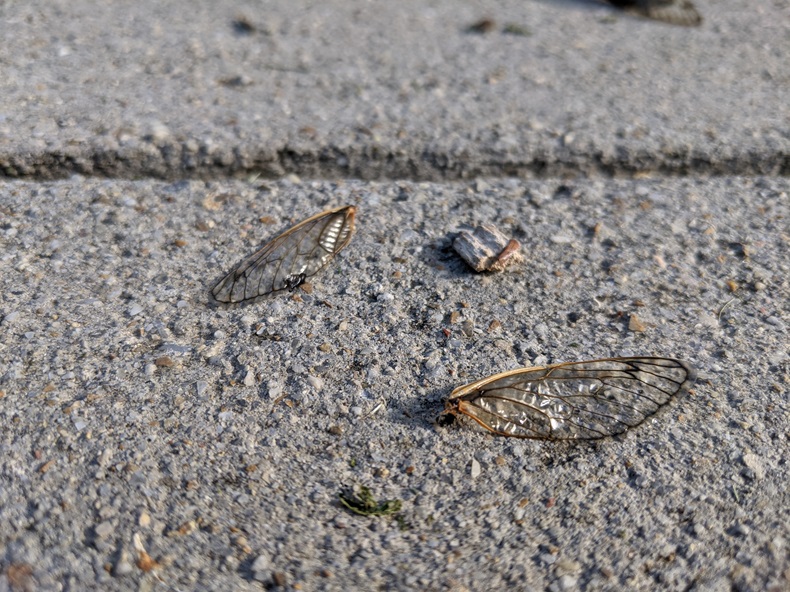
Cicadas are the best bugs.
The 17-year cicadas emerged here in the D.C. area two years ago and I haven’t gotten over it yet. Everyone knows this, and that’s why Our Kate texted me on Monday with a link to a new paper in the journal Science about the effects of cicadas on the food web.
The researchers looked at birds, cicadas, trees, and caterpillars. In a normal year, caterpillars eat trees and birds eat caterpillars. But, in a cicada year, the researchers have put together a pretty compelling case that birds abandon caterpillars for big, juicy, easy-to-find cicadas. As a result, caterpillars have a great year – they’re released from predation, as the ecologists say – and the trees suffer.
Interestingly, other studies have suggested that the trees get the last laugh, as the corpses of countless cicadas decay and return their nutrients to the soil. That massive pulse of decaying cicadas appears to even set the timer on the masting schedule of oaks, which is the thing where oak trees have a really big acorn year every now and then, presumably to overwhelm the squirrels and other animals who eat acorns, so even if they eat every acorn they can, some will make it through to grow into new oak trees. And the cicadas play a part! The circle of life!
The new finding is a nifty bit of science. The researchers watched birds foraging themselves and also recruited birders to tell them what birds they saw eating cicadas. Birds from 82 species were observed partaking of the feast – everything from tiny gnatcatchers that aren’t much bigger than cicadas themselves, up to enormous turkey vultures and trumpeter swans. Some of these birds are allegedly vegetarians, but they weren’t about to say no to these bumbling protein snacks.
The researchers did a lot of other cool things, too – like putting plasticine caterpillars out on trees and coming back a week later to inspect them for beak marks. They counted the real live caterpillars, too, and measured leaf damage on the trees. And they did all of this again and again over time, so they could see how things changed when the cicadas came on the scene to report that things went back to normal by two years later.
All of this comes together to tell the story: When a massive cicada windfall appears, the repercussions travel through the food web. And through the scientific journals. And through my writing career. Thanks, cicadas. You’re the best.
Photo: Helen, in 2023
Thank you for the lovely write up, Helen!